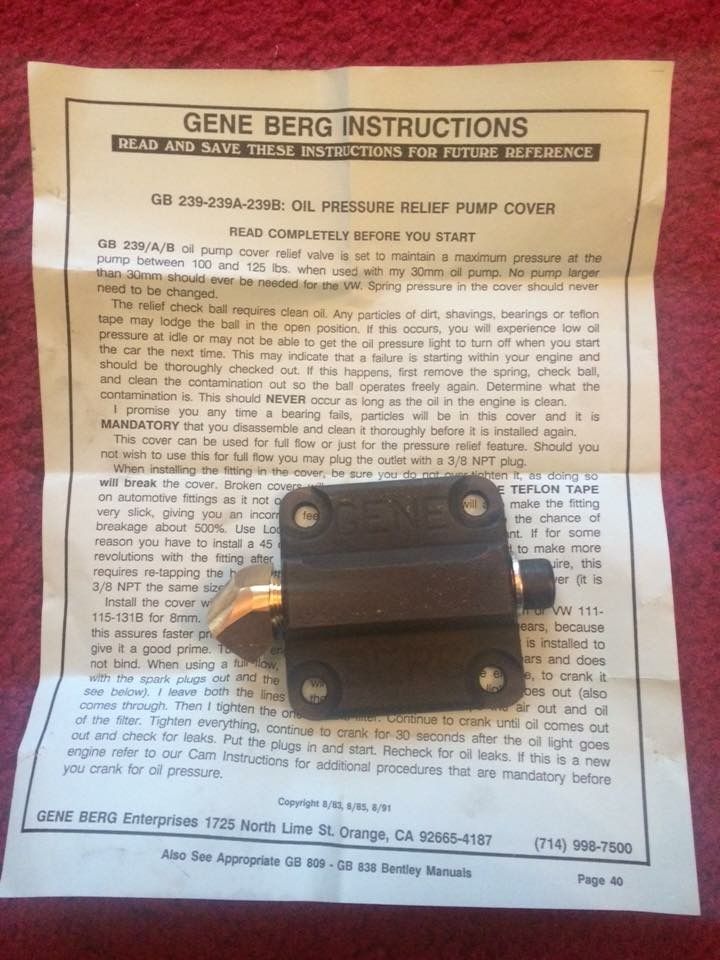Wondered if anyone could point me in the right direction here.
I am in the middle of installing a full flow system on my 1600TP. The upper oil Gallery has been opened and tapped to receive a brass elbow for the return. I have an Empi pump cover with the side exit. Does anyone have a suggestion for a fitting for this cover as the threaded barb supplied conflicts with the engine mount from the moustache bar?
Any photos of how others have worked around this and possible mount positions for the filter would be much appreciated.
Thanks
I am in the middle of installing a full flow system on my 1600TP. The upper oil Gallery has been opened and tapped to receive a brass elbow for the return. I have an Empi pump cover with the side exit. Does anyone have a suggestion for a fitting for this cover as the threaded barb supplied conflicts with the engine mount from the moustache bar?
Any photos of how others have worked around this and possible mount positions for the filter would be much appreciated.
Thanks




